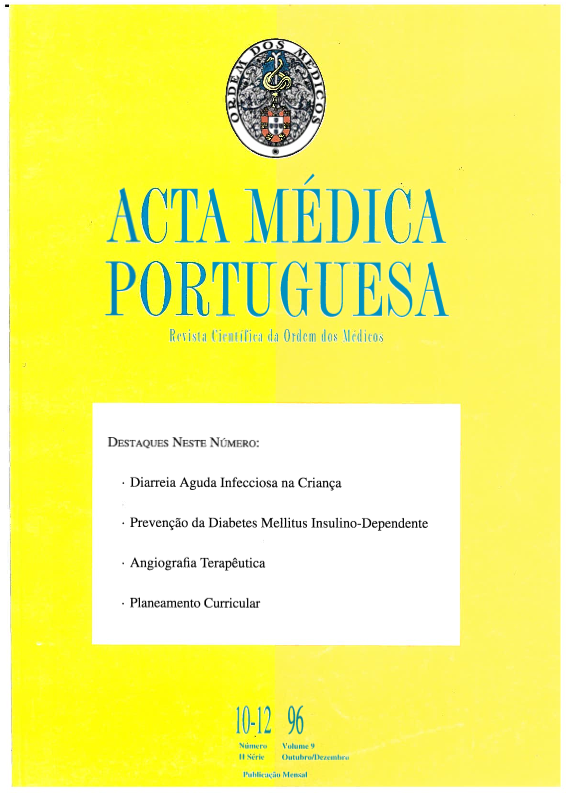Sepsis in the very low-birth-weight newborn infant.
DOI:
https://doi.org/10.20344/amp.2624Abstract
Sepsis is a common pathology during the neonatal period. Low-birth weight is the most important isolated risk factor. With the purpose of determining the prevalence of nosocomial infection in newborns of very low birth weight (VLBW), finding the microbial flora and the mortality of these patients, the authors retrospectively analysed the clinical processes of the hospitalized VLBW in the Neonatal Intensive Care Unit (NICU) in S. João Hospital in 1993 and 1994. Of the 1091 newborns admitted to the hospital in these two years, 112 were VLBW (10%). Of these, 48 had sepsis-31 (28%) confirmed sepsis and 17 (15%) probable sepsis. The agents most commonly found were Staphylococcus epidermidis (44%) and Klebsiella pneumoniae (21%). Thirteen patients (27%) died, with infection as the cause of death in nine (19%). Our results confirm the importance of nosocomial neonatal infection, which should involve the strict observance of the asepsis norms and a proper policy of antibiotics.Downloads
Downloads
How to Cite
Issue
Section
License
All the articles published in the AMP are open access and comply with the requirements of funding agencies or academic institutions. The AMP is governed by the terms of the Creative Commons ‘Attribution – Non-Commercial Use - (CC-BY-NC)’ license, regarding the use by third parties.
It is the author’s responsibility to obtain approval for the reproduction of figures, tables, etc. from other publications.
Upon acceptance of an article for publication, the authors will be asked to complete the ICMJE “Copyright Liability and Copyright Sharing Statement “(http://www.actamedicaportuguesa.com/info/AMP-NormasPublicacao.pdf) and the “Declaration of Potential Conflicts of Interest” (http:// www.icmje.org/conflicts-of-interest). An e-mail will be sent to the corresponding author to acknowledge receipt of the manuscript.
After publication, the authors are authorised to make their articles available in repositories of their institutions of origin, as long as they always mention where they were published and according to the Creative Commons license.









